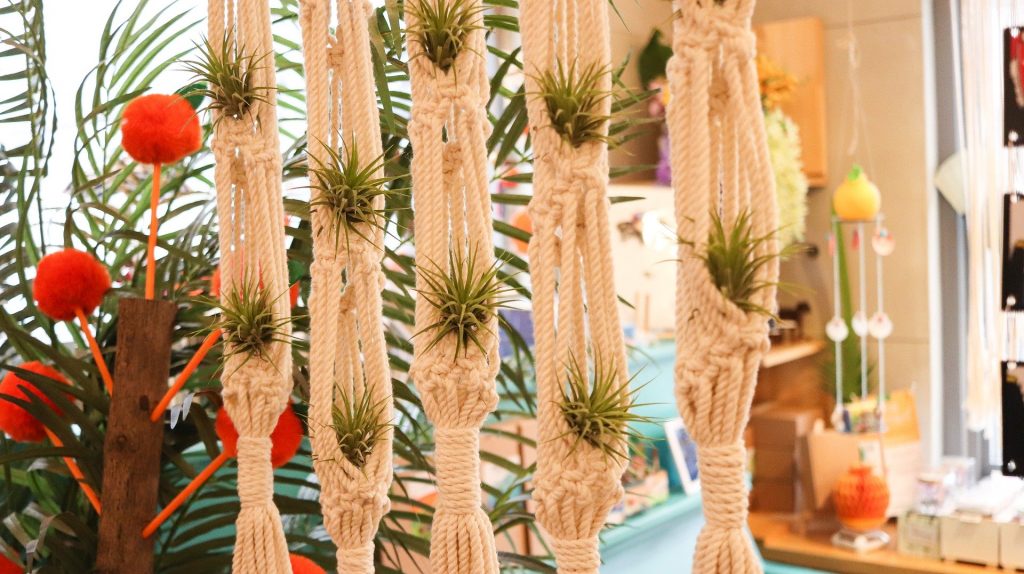Plant identification is the key to successful home gardening. If you know the plant by name, you can google it’s care tips and light requirements. Too much light for these plants can result in leaf burn or even death of the plant.
Variegated species are not recommended for low light areas, as the leaves will lose their coloration. As a general rule, variegated foliage requires more sunlight than darker green foliage.
PLEASE WATCH VIDEO BELOW FOR THE LIST:

- INTRODUCTION:
The genus Tillandsia comprises of over 650 species of air plants. They are called “Air Plants” simply because they get the majority of their nutrients from the air around them. They do not need soil to grow and don’t even think of planting them in soil! Tillandsias grow differently than most other house plants, so they can be confusing to the beginner.
Well, Air plants are actually epiphytes. Epiphytes are plants that grow, rather cling upon other plant or any object merely for support. Orchids is another example for epiphytes. These are commonly seen growing on branches of a tree and stuff like that.
There are many species of air plants. The leaves are silvery green in color and are covered with specialized cells (trichomes) that are capable of rapidly absorbing water that gathers on them. Another interesting fact about air plants is, each plant will flower once in its lifetime.
- THINGS TO DO FOR A NEWLY PURCHASED PLANT:
Most of these air plants can be purchased online. They are usually shipped in boxes with holes for air ventilation and the plants survive many days during the transit without any issues. The first thing you should do is carefully unpack them and submerge them in water for 1 hour, preferably upside down. One most important thing you should remember is not to use chlorinated water or even hard water. Best is to use water from your water purifier. Shake gently to remove excess water and dry them for few minutes in air, because water trapped in between the leaves can carry a risk of rot. You can then hang them in air in bright indirect light, like near a window place. Do not fertilize the plants at this stage. We will talk more on its care tips in the later part of this episode.
- ATTACHING OR INSTALLING AIR PLANTS:
There are many many ways you can attach or install air plants. This depends on your decor skills and stuff like that. The simplest way is to hang them in air using a string. You can also mount them on rocks, sea shells, wooden logs, wooden pieces, flower vase and so on. The only thing you should remember is there should not be water accumulation because it can lead to rot and kill the plant. You can also mount them in a shallow pot or a small pot by using a card board like this. One important Don’t here is NOT to use copper wire for installing air plants, as this can kill your plant.

- AIR PLANTS IN GLASS GLOBES:
This is the most popular choice for installing air plants. This looks really fascinating and also the glass globe has holes for good ventilation. Few Do’s and Don’t’s you have to remember if you are using glass globes. The larger the globe, the better. Mist your plant every 4-5 days with one spray for tiny globes, or 2-3 sprays for larger globes of 3-5 inches in size or even more if the plant is in a large open globe. The key is to judge the drying time, the smaller the globe, the less circulation, the longer the plant will hold the moisture. If you over water the plant will die. Also Do not place your globes directly in front of a window where they get direct sun. Remember the glass will intensify the sunlight and the heat. Indirect light is best and some will even grow in low to moderate light.
- LIGHT REQUIREMENT & LED GROW LIGHTS:
Bright filtered light is the general rule, and the higher the humidity of the air the higher light will be tolerated. You can provide them artificial light for few hours. Make sure the distance between the light and the plant is something from 12 to 24 inches depending on the intensity of the grow light.
- WATERING YOUR AIR PLANTS:
As discussed earlier, always use water from your water purifier and not hard water or chlorinated water. You can soak your air plants for 1 to 2 hours, once every 15 days depending on the humidity levels. You can also mist your air plants two to three times in a week.
- FERTILIZER:
You can add a pinch of your orchid fertilizer into the mister and spray two or three mists once in a month. You can also use other water soluble NPKs in 1/4th the recommended strength for misting. If you want to provide natural fertilizers, simple soak them for an hour in pond water or even aquarium water once in a month.
- AIR CIRCULATION AND TEMPERATURE:
They should be given enough light and air circulation to dry in 4 hours or less after soaking. Do not keep plants constantly wet or moist. Optimum temperature range for Tillandsias is 15 – 30 degrees Centigrade.
- PROPAGATION:
Air plants will start producing offsets or Pups like each plant can produce between 2 – 8 pups. You can separate these babies once they grow to 1/3rd the size of the mother plant and plant them independently.
- DO’S AND DON’TS FOR AIR PLANTS:
- Never plant them in soil, they can rot.
- Protect them from extreme weather, especially frost.
- Do not keep them constantly wet for a long time.
- Do not forget to mist them 2 to 3 times a week, especially in non-humid conditions.
